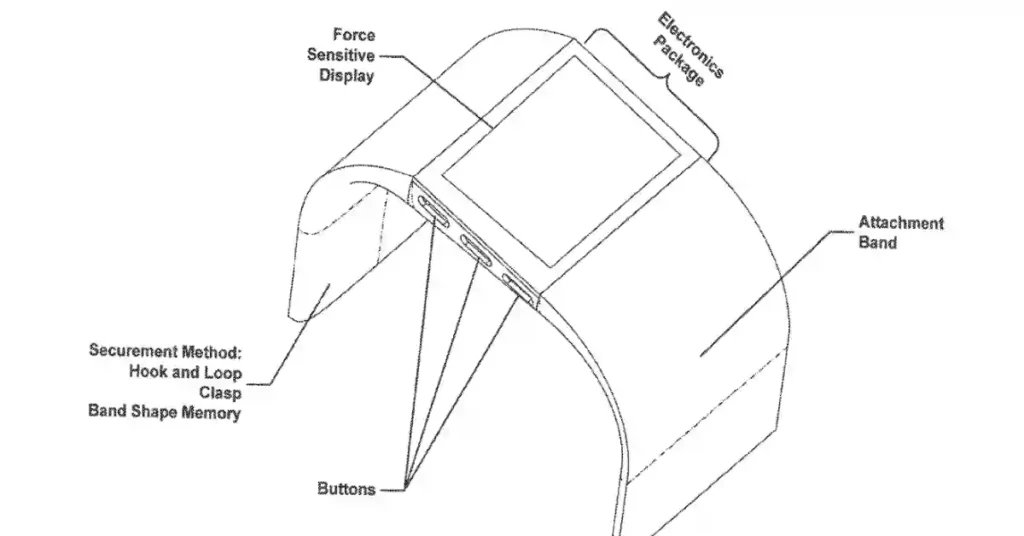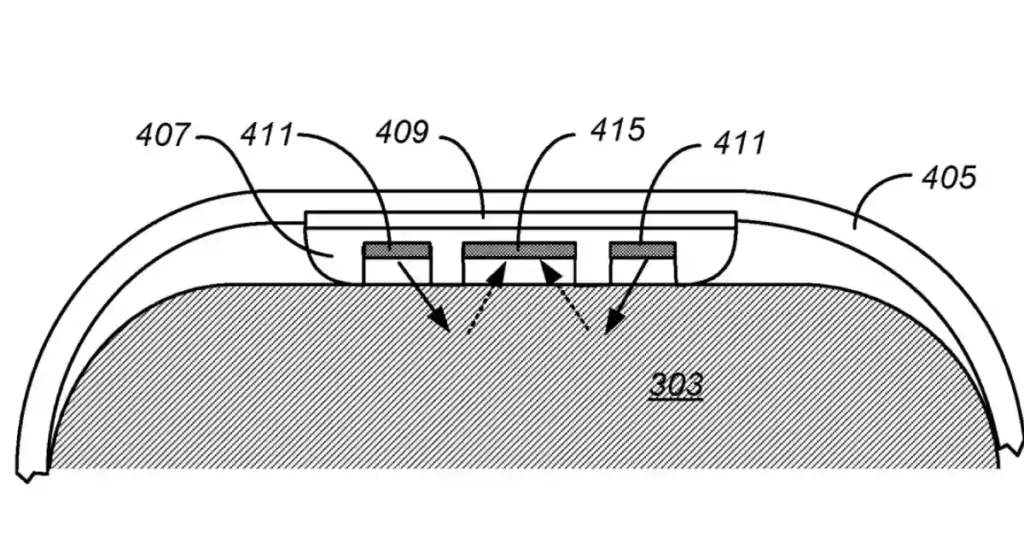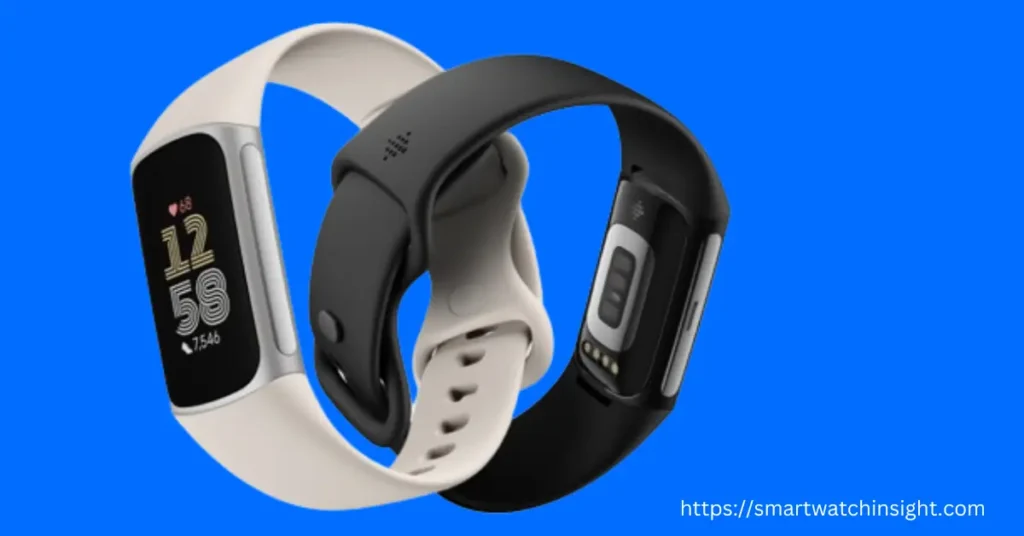Fitbit has recently filed a patent for an innovative blood pressure sensor technology that could be coming to its smartwatches. This new feature involves a combination of a force sensor and a PPG (Photoplethysmography) sensor, designed to measure blood pressure directly from your wrist.
However, there’s still some uncertainty about whether this technology will debut on the Fitbit Charge 7 or potentially on another model, like the Fitbit Versa 5. Keep reading to explore how this new technology works and what it could mean for your health tracking.
What We Know About Fitbit is developing a tiny blood pressure monitor
The Patented Technology
Google-owned Fitbit recently filed a patent application that reveals exciting details about a new blood pressure sensor technology.
The patent, filed with the US Patent and Trademark Office, describes a device that is worn on the wrist and contains a combination of a force sensor and a PPG (photoplethysmography) sensor. Here is a breakdown of what these sensors do:
- Force Sensor: This sensor requires users to press down on it, which records the blood pulse amplitude.
- PPG Sensor: Utilizes light to measure heart rate and, in combination with the force sensor, helps estimate blood pressure.

The integration of these sensors aims to provide users with more comprehensive health monitoring directly from their wrist.
While Fitbit has not confirmed whether this new technology will be featured in the Fitbit Charge 7 or the Fitbit Versa 5 or other new models, the integration of these sensors is designed to enhance health monitoring directly from the wrist.
How the Sensors Work
Force Sensor: This sensor is designed to measure blood pulse amplitude by requiring users to press down on it. When you apply pressure, the force sensor captures the pulse wave as it travels through your wrist.
This data is crucial for estimating blood pressure because it provides a measure of the force exerted by the blood against the arterial walls.
PPG Sensor: The PPG sensor utilizes light to measure heart rate. It works by shining light into the skin and detecting changes in the amount of light that is reflected.
These changes correspond to the blood flow in the arteries. By combining PPG measurements with the data from the force sensor, the device can estimate blood pressure more accurately.
Potential Impact on Health Monitoring

The integration of these sensors aims to offer users a more comprehensive health monitoring experience directly from their wrist. Traditionally, measuring blood pressure requires a cuff-based system, which can be cumbersome and less accessible for daily use.
With this new technology, Fitbit aims to make blood pressure monitoring as straightforward as checking your heart rate.
Is Fitbit Charge 7 Adding a Tiny Blood Pressure Sensor
Fitbit has not explicitly confirmed whether this innovative blood pressure sensor will be included in the Fitbit Charge 7 or the Fitbit Versa 5. Both models are popular in Fitbit’s lineup, and each has its own set of features and target audience:
Fitbit Charge 7: Known for its fitness-tracking capabilities, the Charge series often focuses on health metrics relevant to active users, such as heart rate monitoring, sleep tracking, and activity tracking.
Adding a blood pressure sensor to the Charge 7 could make it a more comprehensive tool for health-conscious individuals who want to keep a close eye on their cardiovascular health.
Fitbit Versa 5: The Versa series typically offers a broader range of smartwatch features, including apps, notifications, and music control. The addition of a blood pressure sensor to the Versa 5 could appeal to users looking for a more versatile smartwatch with advanced health monitoring capabilities.
The Future of Blood Pressure Monitoring in Wearables
Blood pressure monitoring has long been considered a “holy grail” in wearable technology. Companies like Fitbit are working to make this vital health metric more accessible and convenient for everyday use. The challenge lies in developing technology that is both accurate and user-friendly.
Current Technologies: Presently, blood pressure monitoring is mainly done through traditional cuff-based devices or specialized home monitors.
While some smartwatches have started to include features related to blood pressure, they typically rely on indirect methods such as tracking Pulse Arrival Time (PAT), which is not as accurate as direct measurement.
Fitbit’s Approach: By integrating a force sensor with a PPG sensor, Fitbit aims to provide a more accurate and convenient method for users to track their blood pressure.
This approach could potentially make it easier for people to monitor their cardiovascular health regularly, which is crucial for early detection and management of hypertension.
Potential Benefits of the New Blood Pressure Sensor
Early Detection of Hypertension
One of the most significant benefits of this technology is the potential for early detection of hypertension. High blood pressure is often asymptomatic, making early detection crucial for preventing serious health issues.
With the Fitbit Charge 7’s new sensor, users could monitor their blood pressure more frequently and conveniently.
Convenience and Accessibility
Incorporating a blood pressure sensor into a smartwatch means users no longer need to visit a doctor or use separate devices to monitor their blood pressure.
This feature brings health tracking right to the wrist, providing more immediate feedback on one’s health status.
Enhanced Health Insights
With continuous monitoring, the Fitbit Charge 7 could offer deeper insights into cardiovascular health. Users could track their blood pressure trends over time, helping them manage their health proactively.
Comparing Fitbit Charge 7 with Other Wearables
Fitbit Charge 7 vs. Fitbit Charge 6
| Feature | Fitbit Charge 6 | Fitbit Charge 7 (Rumored) |
|---|---|---|
| Blood Pressure Sensor | No | Yes |
| Heart Rate Monitoring | Yes | Yes |
| Sleep Tracking | Yes | Yes |
| GPS Tracking | No | Yes (Expected) |
| Price | $150 | $180 (Estimated) |
The Fitbit Charge 7’s rumored blood pressure sensor is a significant upgrade from the Charge 6, making it a more attractive option for users interested in advanced health metrics.
Fitbit Charge 7 vs. Competitors
| Feature | Fitbit Charge 7 (Rumored) | Apple Watch Series 8 | Samsung Galaxy Watch 6 |
|---|---|---|---|
| Blood Pressure Sensor | Yes | No | Yes |
| ECG Monitoring | Yes | Yes | Yes |
| Heart Rate Monitoring | Yes | Yes | Yes |
| Sleep Tracking | Yes | Yes | Yes |
| Price | $180 (Estimated) | $399 | $350 |
Compared to competitors, the Fitbit Charge 7’s inclusion of a blood pressure sensor could set it apart, offering a unique feature that is not yet standard across all smartwatches.
What This Means for Users
Improved Health Management
For users managing conditions like hypertension or those looking to monitor their cardiovascular health more closely, the Fitbit Charge 7’s blood pressure sensor could be a game-changer. It offers a non-invasive, convenient way to keep tabs on blood pressure, making health management more accessible.
Increased Engagement
Having the ability to monitor a broader range of health metrics can increase user engagement with their wearable device. This feature could encourage users to take a more active role in their health and wellness journey.
Potential Challenges
While this technology holds promise, there may be challenges:
- Accuracy: Ensuring the accuracy of a wrist-worn blood pressure sensor is complex. Fitbit will need to validate the technology through rigorous testing.
- Battery Life: Adding new sensors could impact battery life. Fitbit will need to balance functionality with longevity to maintain user satisfaction.
Conclusion
Fitbit is potentially revolutionizing wearable health technology with the introduction of a blood pressure sensor in the Fitbit Charge 7. This advancement could make it easier for users to monitor their health metrics more closely and conveniently.
As we await official announcements, the possibility of such a feature promises exciting developments in the world of fitness and health technology.

